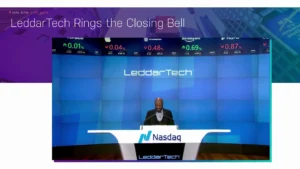As Mortgage Rates Stay Up, Lenders and Brokers Need to Get ‘Creative’
Editor’s Note: This report was initially conducted after July 14’s Freddie Mac weekly average mortgage rates were released. Though the video focuses on those specific averages, the article has been expanded upon to add context from the last several weeks of mortgage rate fluctuation.
Freddie Mac’s weekly averages since July 14 have been volatile, with spikes and dips in 30-year fixed, 15-year fixed and 15-year adjustable mortgage rates. But even with some short term relief after August 4’s numbers brought rates below 5% for the first time since April 2022, the last four weekly averages have stayed in line with the overall trend for 2022: mortgage rates are net going up and a looming recession isn’t helping.
Numbers from July 14, 21 and 28 shattered much of the industry’s short-term optimism after a rate slide in May. The 30-year fixed mortgage rate hit 5.51% on July 14, a sharp increase from the same time last year where the 30-year fixed was 2.88%. That 2.88% rate was closest to the lowest a 30 year mortgage has ever been, according to Freddie Mac numbers. In those same July 14 averages, the 15-year fixed rate hit 4.67%, up from 2.22% year-over-year.
A week later and U.S. weekly mortgage averages continued their rise; June 28’s Primary Mortgage Market Survey release revealed a 30-year fixed rate of 5.54% and a 15-year fixed rate of 4.75%. July 28 brought a dip back down in the 30-year fixed to 5.30%, and then August’s first mortgage rates report revealed a much-needed rate fall to below 5%.
Since the start of the year, overall mortgage rates have had an upward trajectory. To put that climb into perspective, July 21’s 5.54% 30-year fixed rate is only slightly lower than June’s 5.81% rate, which was the highest 30-year rate since the 2008 recession. With a short-term oscillation in rates that keeps mortgage costs higher than they’ve been in over a decade, experts expect this instability to continue.
“Until we know exactly what’s going on with the Fed…. until things get sorted out with the yield curve and we really figure out if we’re going to head into a recession and for how long, or if the Fed is successful with a soft landing, I think it’s going to be kind of a minute by minute thing,” said Cliff Freeman, owner of the Freeman Group and loan officer with Success Lending.
Housing has been widely unaffordable for a while now, but costlier mortgages are only making the issue worse. With every point that mortgage rates go up, buyers lose about 10% of their buying power. Borrowers are struggling to figure out what’s affordable in both the short- and long-term, considering inflation is increasing monthly expenditures coupled with rising mortgages pushing their buying power down nearly 30%, while home prices have increased as much as 25% year-over-year in some markets.
“Houses are taking a little bit longer to be sold, which is creating a little bit of panicking on sellers. We can see some neighborhoods like in North Dallas where you’re starting to see now prices being dropped below sales price,” said Juan Sandoval, mortgage consultant at On Q Financial.
High mortgage rates, a lacking housing supply and rising materials costs for new developments have compounded to such a degree that monthly rent is now cheaper than monthly mortgage payments in 75% of the U.S.’ biggest cities, according to analysis from Realtor.com. These issues, especially higher interest and mortgage rates, are creating a positive feedback loop environment where almost every player in the housing market is facing instability.
“We’re seeing a lot of builders have issues with loans that started last year on their construction, and they’re finally being finished by now, and you see them losing loans due to the interest rate not being 3% but a 6% average, and therefore they’re seeing fallout,” Sandoval said. “So you see now they’re offering more incentives like more commissions toward sellers, more contributions to buyers.”
For mortgage professionals like brokers and lenders, the current climate is “chaos,” as Freeman puts it. How is this shaping day-to-day financing strategies with clients?
The pressure is rising for brokers to guide clients through housing uncertainty as they lose trust in the market, and in some cases are pushed out of loan qualification.
“A lot of these people who’ve gone through the increase from the 3% to the 6% might be on that limit where they don’t qualify anymore, and having another increase on interest rate might make them not qualifiable,” Sandoval said.
This is pushing buyers to seek lower monthly payments to help pad them pad their family’s debt-to-income ratio. In turn, lenders are having to get creative to support their clients. Deals are falling through left and right, and so the role of the trusted advisor is being challenged. Some lenders are finding relief for buyers through non-traditional loans with higher down payments but lower mortgage payments, in turn boosting purchasing power.
“I’m starting to see more people looking for 40-year amortization instead of a 30-year. That expands your amortization therefore your payment is going to be a little bit lower. We’re seeing more of the use of non-QM loans for the need of 12 month, 24 month bank statement loans, profit and loss statement loans, DSR loans,” Sandoval said.
Hopefully lenders learned from 2008 that pushing 100%-financed subprime mortgages en masse amid an expensive housing market is bad news. Luckily, non-QM loans require 20% down payment instead of pure financing while retaining lower monthly payments, giving buyers more skin in the game while allowing them more liquidity in case of emergency. However, non-QMs are still risky, and Freeman advises that lenders be “careful” about bringing clients into more risk with longer amortization loans.
“If you recall, back in the Great Recession, of the roughly 7 million foreclosures, only about 1 million were due to systemic loan problems with the subprime market. There was a good number of people who went into foreclosure who had regular loans and they just couldn’t pay their bills,” Freeman said. “And so I don’t think we can overlook the fact that if the wheels come off the bus with the Fed and you have challenging times with our economy coming up, that could potentially put people at risk, especially those with lower down payment loans, government loans.”
Both Freeman and Sandoval still advise lenders to do everything they can to get clients a conventional stable loan, like classic FHAs, VAs, and USDAs. However the ticker price of signing on for a mortgage with a near 6% rate is hard to sell in the current climate. Informed by experience from the last recession, Sandoval is guiding buyers to consider the long-term, as rates often fall in eventual post-bust cycles.
“What we’re advising people to do is to actually buy the house now because we definitely see the prices of houses going up,” Sandoval said.
It’s also important for mortgage professionals to be conscientious of existing homeowners who’re also feeling the inflationary crunch and who may be seeking an out from high monthly payments with refinancing. This is especially timely considering consumer debt has skyrocketed in the last few months, the “worst debt” that borrowers could be generating right now, Freeman said.
“In terms of refinancing, there is no rate and term, this is going to be to clean somebody’s personal balance sheet up or maybe take them from a 15, put them back in a 30, to reduce their payments,” Freeman said.
Sandoval explained that, at his practice, it seems the refinancing boom has subsided; “whoever needed to refinance already did,” he said. That doesn’t mean refinancing shouldn’t be a part of mortgage professionals’ advice, especially for new buyers. Our experts say that while the short-term push for refinancing is in the rearview mirror, it’s important to remind clients to strategically consider refinancing as part of a long-term play, considering buyers are not tied to their current rate for the length of time they own the home.
“People say ‘marry the house but date the rate,’ and conceivably, depending on what the Fed does here, we could see people who’re buying now be able to refinance rate and term and get a better deal down the road,” Freeman said.
Because of consistently high inflation and buyers’ already stretched budgets, brokers are also finding they need to prepare to give financial advice in a larger context, sometimes even helping buyers with some of their other expense decisions in order to prepare them to take on a mortgage.
“We also not only have to talk about programs with the client but also talk about how do they need to manage their finances, their credits…or maybe even refinancing some of those debts that they have to lower a payment in order to create a little bit more liquidity on their debt-to-income ratio,” Sandoval said.
How the Fed will continue to engineer interest rates to cool inflation will have drastic impacts on the stability of the housing market; while the Fed doesn’t have control over setting mortgage rates, its interest rate hikes domino through all types of consumer and business loans, including housing loans. The impact of the Fed’s monetary policy will be especially critical to consider if unemployment reaches Larry Summers’ recommended 5% or even 10%, further depressing buyer budgets.
With so many macroeconomic trends still in a hazy crystal ball, lenders and brokers are advised to prioritize the responsibility of their role as a trusted advisor during this unaffordable buyer climate. This means getting in the weeds with each buyer and understanding their unique horizon, from starting a family to relocating to a new state, which will determine a timeline of payments and subsequently which rate strategy will be right for them.
“This is the right time where lenders have to really develop conversations with customers to really understand what they’re trying to achieve and how they’re trying to achieve it, and in what timeframe,” Sandoval said.
“Now more than ever is when your clients need you to be their trusted source of knowledge and advice and experience to navigate through these waters. And to really determine what’re the reasons why your client is looking to make this purchase and is it a wise thing to do right now depending on your horizon, how long you’re going to be holding the home,” Freeman said.







